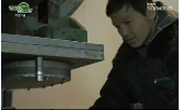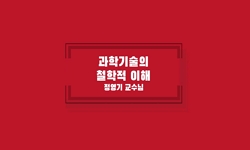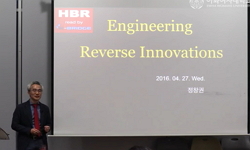목적: 에티오피아에서는 지하수 불소 제거를 위해서 골탄을 이용하고 있지만, 흡착 효율이 낮아 잦은 교체비용의 부담을 안고 있다. 또한, 처리수에 탁도와 유기물이 함유되어 식수의 안전...
http://chineseinput.net/에서 pinyin(병음)방식으로 중국어를 변환할 수 있습니다.
변환된 중국어를 복사하여 사용하시면 됩니다.
- 中文 을 입력하시려면 zhongwen을 입력하시고 space를누르시면됩니다.
- 北京 을 입력하시려면 beijing을 입력하시고 space를 누르시면 됩니다.
https://www.riss.kr/link?id=A107163384
- 저자
- 발행기관
- 학술지명
- 권호사항
-
발행연도
2020
-
작성언어
Korean
-
주제어
Fluoride Removal ; Bone Char ; Developing Country ; Operating Condition ; Appropriate Technology ; 불소제거 ; 골탄 ; 개발도상국 ; 운영조건 ; 적정기술
-
등재정보
KCI등재
-
자료형태
학술저널
- 발행기관 URL
-
수록면
520-528(9쪽)
-
KCI 피인용횟수
0
- DOI식별코드
- 제공처
-
0
상세조회 -
0
다운로드
부가정보
국문 초록 (Abstract)
목적: 에티오피아에서는 지하수 불소 제거를 위해서 골탄을 이용하고 있지만, 흡착 효율이 낮아 잦은 교체비용의 부담을 안고 있다. 또한, 처리수에 탁도와 유기물이 함유되어 식수의 안전성이 떨어진다. 이에 본 연구에서는 현지에서 생산 가능한 고흡착 골탄을 개발하였으며 초기 탁도 및 유기물 저감을 위한 최적의 운전조건을 도출하였다.
방법: 뼈를 씻어 건조시킨 후 내부까지 태워질 수 있도록 절단하여 전기로에서 350, 450, 550℃에서 온도별로 1, 3, 5시간을 태워 골탄을 제작하였다. 태워진 골탄들은 에티오피아 현지에서 운영되는 골탄 크기인 600~2,000 ㎛로 분쇄하여 실험하였다. SEM과 BET를 이용해 골탄 표면 분석을 수행하였으며, 회분기 실험를 통해 kinetic, isotherm 흡착 실험을 하였다. 컬럼실험은 초기 불소 농도 4.8 ㎎/L에서 100, 200, 300, 400 L/day의 유속 조건으로 90분 운전하면서 탁도, TOC, 불소 농도 변화를 확인하였다.
결과 및 토의 : 최적의 골탄 제조 조건으로 450℃에서 3시간 태우는 것이 탁도와 유기물 제거 측면에서 효과적이었다. SEM, BET 분석을 통해서 골탄의 표면 거칠기와 비표면적 특징이 불소 흡착효율에 영향을 미쳤다. 회분기 실험을 통해서 제조된 골탄의 흡착능이 3.7 ㎎ F/g으로 확인되었다. 컬럼 실험에서는 200 L/d은 0.5 NTU 미만의 탁도에 도달하는데 가장 짧은 시간을 보여주고 있으며, TOC를 제거할 때 가장 작은 처리수로도 가능하였다. 하지만, 100 L/d에서 1.5 ㎎/L의 불소에 도달하는 운전시간은 80분으로 가장 길었다. 그래서 운전시간, bed volume, 에너지 효율 측면에서 100 L/d가 효과적인 운전조건인 것으로 나타났다.
결론: 컬럼을 100 L/d에서 운전할 때 불소제거 측면에서 효과적인 운전조건이다. 그래서 개발도상국에서 골탄을 이용한 불소 제거 정수처리 시설은 저유량으로 운전하는 것이 효과적이다.
다국어 초록 (Multilingual Abstract)
Objectives : Bone char is used in many eastern countries in Africa to remove high levels of fluoride from groundwater. However, due to the low adsorption efficiency of bone char, it is necessary to replace bone char frequently, which cause significant...
Objectives : Bone char is used in many eastern countries in Africa to remove high levels of fluoride from groundwater. However, due to the low adsorption efficiency of bone char, it is necessary to replace bone char frequently, which cause significant burden to the people in those areas. In this study, we developed a water treatment system to remove high level of fluoride in groundwater using a high efficiency bone char.
Methods : In order to make a high efficiency bone char, cow bones were washed, dried and cut into small pieces. Then the bones were burned for 1, 3 and 5 hours at 350, 450 and 550℃ in electric furnaces. After that, the burned bones were sieved with 600~2,000 μm to match the size of bone char being used in Ethiopia. Surface analysis of bone char was performed using SEM and BET. The removal efficiency of bone char was conducted with various level of turbidity, TOC, and fluoride concentration for 90 minutes under the flow rate conditions of 100, 200, 300, and 400 L/day with an initial fluoride concentration of 4.8 ㎎/L.
Result and Discussion : There was a significant difference between the bone char from Ethiopia and our study in terms of their surface roughness and specific surface area according to SEM and BET analysis. The adsorption capacity of the bone char produced in this study was 3.7 ㎎ F/g, compared to 1 ㎎/L from the one from Ethiopia. In terms of turbidity and organic matter removal with column test, 200 L/d showed the shortest operating time to reach turbidity of less than 0.5 NTU, and was an effective operation for TOC removal. However, It took the longest to 1.5 ㎎/L of fluoride after breakthrough under 100 L/d operating conditions. In terms of operating time, bed volume, and energy efficiency, 100 L/d was found to be an effective operating condition.
Conclusions : We developed a high efficiency bone char in this study with modification of its production process and tested it at various operating conditions. Our study showed that the bone char developed in this study is about 4 times more effective than traditional bone char and it is most effective at operation with low flow rates. Column operation is most effective at 100 L/d for fluoride removal under operating time and bed volume and energy efficiency. Therefore operating condition of drinking water treatment system for the fluorine removal using bone char in developing countries is effective in low flow rate operation.
목차 (Table of Contents)
- 1. 서론
- 2. 실험방법
- 3. 결과 및 고찰
- 4. 결론
- References
- 1. 서론
- 2. 실험방법
- 3. 결과 및 고찰
- 4. 결론
- References
참고문헌 (Reference)
1 E. M. Nigir, "Thermal regeneration process of bone char used in the fluoride removal from aqueous solution" 142 (142): 3558-3570, 2017
2 K. R. Nair, "The occurrence and distribution of fluoride in groundwater of Kenya, Challenges in African Hydrology and Water Resources" 144 : 75-86, 1984
3 J. C. Moreno-Piraján, "Study of the textural properties of bovine bones char under different conditions" 3 (3): 176-181, 2011
4 M. Mohapatra, "Review of fluoride removal from drinking water" 91 (91): 67-77, 2009
5 A. Aklil, "Removal of heavy metal ions from water by using calcined phosphate as a new adsorbent" 112 (112): 183-190, 2004
6 Y. Ma, "Removal of fluoride from aqueous solution using granular acid-treated bentonite (GHB): batch and column studies" 185 : 1073-1080, 2011
7 N. A. Medellin-Castillo, "Removal of fluoride from aqueous solution using acid and thermally treated bone char" 22 : 951-961, 2016
8 M. Mourabet, "Removal of fluoride from aqueous solution by adsorption on hydroxyapatite (HAp) using response surface methodology" 19 (19): 603-615, 2015
9 C. K. Rojas-Mayorga, "Optimization of pyrolysis conditions and adsorption properties of bone char for fluoride removal from water" 104 : 10-18, 2013
10 R. Leyva-Ramos, "Kinetic modeling of fluoride adsorption from aqueous solution onto bone char" 158 (158): 458-467, 2010
1 E. M. Nigir, "Thermal regeneration process of bone char used in the fluoride removal from aqueous solution" 142 (142): 3558-3570, 2017
2 K. R. Nair, "The occurrence and distribution of fluoride in groundwater of Kenya, Challenges in African Hydrology and Water Resources" 144 : 75-86, 1984
3 J. C. Moreno-Piraján, "Study of the textural properties of bovine bones char under different conditions" 3 (3): 176-181, 2011
4 M. Mohapatra, "Review of fluoride removal from drinking water" 91 (91): 67-77, 2009
5 A. Aklil, "Removal of heavy metal ions from water by using calcined phosphate as a new adsorbent" 112 (112): 183-190, 2004
6 Y. Ma, "Removal of fluoride from aqueous solution using granular acid-treated bentonite (GHB): batch and column studies" 185 : 1073-1080, 2011
7 N. A. Medellin-Castillo, "Removal of fluoride from aqueous solution using acid and thermally treated bone char" 22 : 951-961, 2016
8 M. Mourabet, "Removal of fluoride from aqueous solution by adsorption on hydroxyapatite (HAp) using response surface methodology" 19 (19): 603-615, 2015
9 C. K. Rojas-Mayorga, "Optimization of pyrolysis conditions and adsorption properties of bone char for fluoride removal from water" 104 : 10-18, 2013
10 R. Leyva-Ramos, "Kinetic modeling of fluoride adsorption from aqueous solution onto bone char" 158 (158): 458-467, 2010
11 J. Malago, "Fluoride levels in surface and groundwater in Africa: a review" 3 (3): 1-17, 2017
12 M. Vithanage, "Fluoride in the environment:sources, distribution and defluoridation" 13 : 131-147, 2015
13 N. M. Zúñiga-Muro, "Fluoride adsorption properties of cerium-containing bone char" 197 : 63-73, 2017
14 R. Liu, "Effects of fluoride on coagulation performance of aluminum chloride towards Kaolin suspension" 421 : 84-90, 2013
15 Y. Li, "Effect of long-term exposure to fluoride in drinking water on risks of bone fractures" 16 (16): 932-939, 2001
16 S. M. Kariuki, "Effect of essential mineral ions from aqueous media on adsorption of fluoride by bone char" 9 (9): 9-17, 2015
17 P. Loganathan, "Defluoridation of drinking water using adsorption processes" 248-249 : 1-19, 2013
18 G. E. J. Poinern, "Defluoridation behavior of nanostructured hydroxyapatite synthesized through an ultrasonic and microwave combined technique" 185 (185): 29-37, 2011
19 L. Delgadillo-Velasco, "Bone char with antibacterial properties for fluoride removal: preparation, characterization and water treatment" 201 : 277-285, 2017
20 S. S. A. Alkurdi, "Bone char as a green sorbent for removing health threatening fluoride from drinking water" 127 : 704-719, 2019
21 N. A. Medellin-Castillo, "Adsorption of fluoride from water solution on bone char" 46 (46): 9205-9212, 2007
22 J. Hu, "Adsorption kinetics of fluoride on bone char and its regeneration" 43 (43): 93-112, 2017
23 N.A. Medellin-Castillo, "Adsorption capacity of bone char for removing fluoride from water solution. Role of hydroxyapatite content, adsorption mechanism and competing anions" 한국공업화학회 20 (20): 4014-4021, 2014
24 K. M. K. Kut, "A review of fluoride in african groundwater and local remediation methods" 2-3 : 190-212, 2016
동일학술지(권/호) 다른 논문
-
- 대한환경공학회
- Deepti Gholap Khanvilkar
- 2020
- KCI등재
-
인 고도처리를 위한 일체형 침전부상공정(SeDAF)의 슬러지 발생특성
- 대한환경공학회
- 장여주(Yeoju Jang)
- 2020
- KCI등재
-
인 고도처리를 위한 침전부상공정(SeDAF)에서 Al/P비(aluminium/phosphorus ratio)의 적용성 검토
- 대한환경공학회
- 장여주(Yeoju Jang)
- 2020
- KCI등재
-
- 대한환경공학회
- 백은성(Eun Sung Baek)
- 2020
- KCI등재
분석정보
인용정보 인용지수 설명보기
학술지 이력
| 연월일 | 이력구분 | 이력상세 | 등재구분 |
|---|---|---|---|
| 2027 | 평가예정 | 재인증평가 신청대상 (재인증) | |
| 2021-01-01 | 평가 | 등재학술지 유지 (재인증) |  |
| 2018-01-01 | 평가 | 등재학술지 선정 (계속평가) |  |
| 2017-12-01 | 평가 | 등재후보로 하락 (계속평가) |  |
| 2013-01-01 | 평가 | 등재 1차 FAIL (등재유지) |  |
| 2010-01-01 | 평가 | 등재학술지 유지 (등재유지) |  |
| 2008-01-01 | 평가 | 등재학술지 유지 (등재유지) |  |
| 2006-01-01 | 평가 | 등재학술지 유지 (등재유지) |  |
| 2004-01-01 | 평가 | 등재학술지 유지 (등재유지) |  |
| 2001-01-01 | 평가 | 등재학술지 선정 (등재후보2차) |  |
| 1998-07-01 | 평가 | 등재후보학술지 선정 (신규평가) |  |
학술지 인용정보
| 기준연도 | WOS-KCI 통합IF(2년) | KCIF(2년) | KCIF(3년) |
|---|---|---|---|
| 2016 | 0.52 | 0.52 | 0.45 |
| KCIF(4년) | KCIF(5년) | 중심성지수(3년) | 즉시성지수 |
| 0.43 | 0.42 | 0.604 | 0.13 |





 DBpia
DBpia





